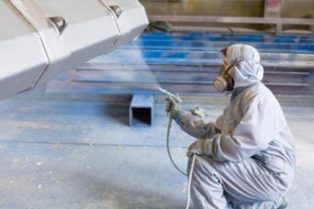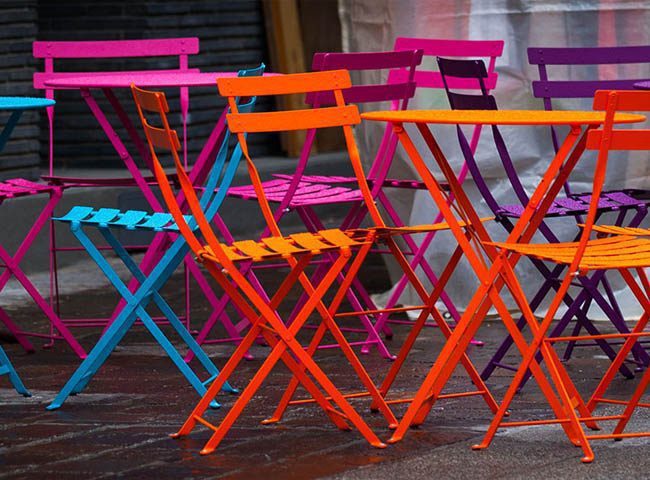Powder Coating VS Painting: Which One Is Better?
When putting wet paint and plating versus powder coating, and you will find yourself assessing each case individually to reach a decision. In order to choose the best sheet metal finishing technique for your product, you must first understand where each of them succeeds and fails, as well as the basic principles and processes involved. This is what we have attempted to outline in this article.
Powder Coating
Wet Paint and Plating


Powder coating is a finishing process in which a coating is applied electrostatically to a surface as a free-floating, dry powder before heat is used to finalize the coating. The powder can be made of any number of products: polyester, polyurethane, polyester-epoxy, straight epoxy, and acrylics. Powder coating is a finishing process that yields a thick, hard finish that is tougher than conventional paints. Powder coating can be found on a range of products, from household appliances to automobile parts.
Powder coating can be accomplished through one of two processes: thermosets and thermoplastics. Thermosetting involves additional chemicals which react to the powder during heating. Thermoplastics have no additional chemicals and instead just melt and flow into the final coating. Both processes of powder coating look quite similar except for this distinguishing feature. The thermoset or thermoplastic powder is created by taking the powder input and binding the items together, heating the mixture, rolling out the product, and then breaking the polymer product into chips which can be ground into a fine powder.
Wet paint is the traditional (although technologized) process of applying a liquid paint to a metal product for finishing. Most sheet metal fabrication processes will use a spray, pump, or pressurized vessel to deliver the wet paint evenly. Plating is the process by which metal is deposited on a conductive surface. (Think of how jewelry can be gold-plated.) Plating can be used for many purposes: decoration, corrosion inhibition, improve wearability, harden, reduce friction, or improve paint adhesion.
The process of wet painting is accomplished by thoroughly cleaning a metal object before wet-blasting liquid paint to an even thickness of approximately 15-20 micrometers. The wet paint is applied until the product is evenly coated with the desired thickness of paint. The process of plating can be quite complicated and depends on the desired metal for plating and sought effect. Typically an item is covered with a desired metal and some combination of heat and pressure are applied to fuse them—although vapors, vacuums, and liquids can also be used as adequate substitutes to the heat or pressure of traditional plating processes.
Advantages:
Powder coating has a number of benefits, one of which has already been mentioned earlier. Powder coating a metal object allows for a dense sturdy finish, more durable than conventional paints. Secondly, this process only requires a single coat so it is fast, efficient, and easy. In addition to its ease of application, it allows for custom textured and colored finishes as the powders involved can be nicely manipulated. Furthermore, powder coating objects results in a remarkably even finish as the powder melts and sets across the entire object at once, leaving no application traces or drips. Finally, the powder coating process is environmentally friendly as it produces minimal volatile organic compounds.
Disadvantages:
With a number of benefits, there are also some disadvantages of powder coating. The first is its inability to produce a thin finish. Although a thick sturdy finish on metal objects works well in most cases but some objects require a thinner finish which is where powder coating fails. Attempting to thin the polymer results in a coarse, bumpy finish much like an orange peel. Another drawback is the complexity and expensive nature of the procedure, making it unsuitable for small-scale sheet metal applications. The process requires electrostatic equipment, spray materials, and an oven which could all be too much work and expense for a minor application.
Advantages:
Wet paint and plating excels where powder coating fails. It’s first benefit is that it can be used to coat objects that can’t be heated, as the process does not require high temperatures to succeed. The second benefit is the wide range of colors paint finish and plating can produce, allowing for much more custom color works than powder coating. The third advantage it has over powder coating is its ability to produce a thin finish, making it ideal for objects that require one. The final benefit is economic; wet paint is more affordable as a finishing process than powder coating, making it suitable for both large and small finishing applications.
Disadvantages:
The disadvantage of both wet paint and plating is their lack of durability as compared to powder coating, with both requiring regular maintenance and re-finishing from time to time. The second disadvantage of paint is its inability to achieve an even finish the first time around, with the object requiring several coats to attain an unblemished and even finish. Unlike powder coating which uses powder as the initial coat, this process uses liquid paint which can be tricky to spread across the body of the object keeping the thickness consistent.
To conclude, both method are having their own pros and cons, hence, choosing a right method for your product is important!

